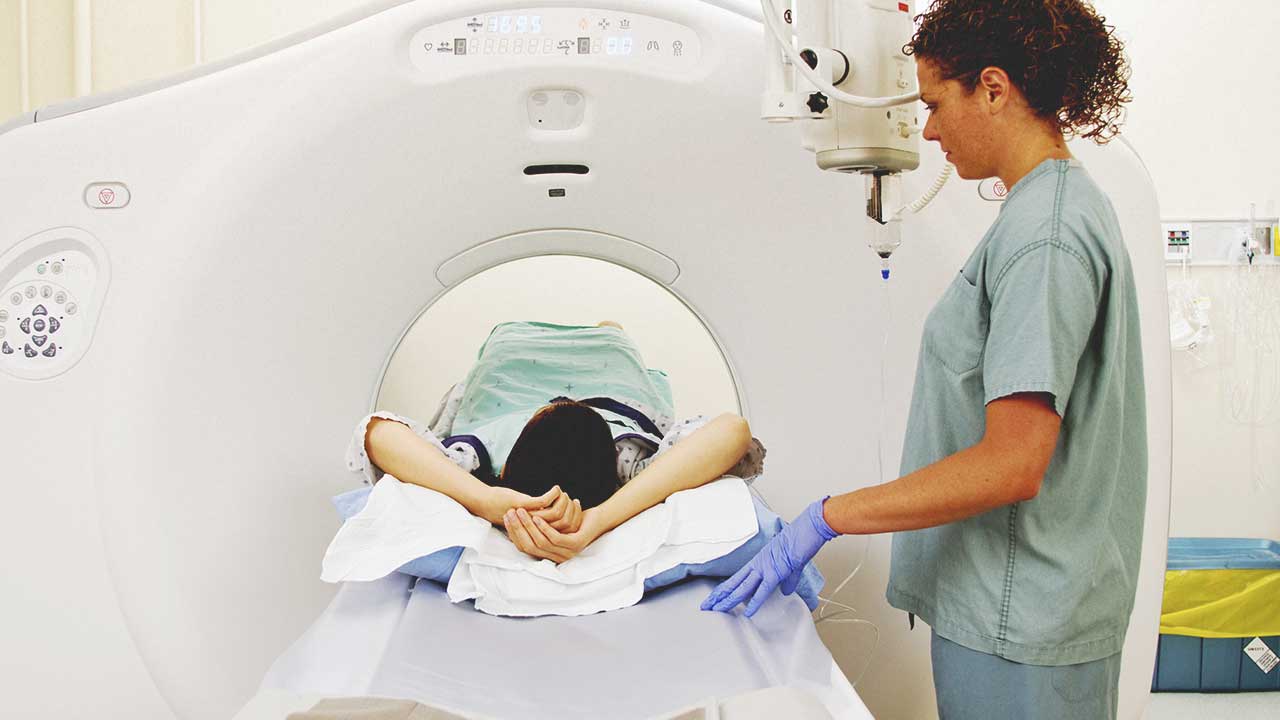
Back pain is one of the most common medical complaints in America today. In fact, according to the National Institute of Neurological Disorders and Stroke, roughly 80 percent of adults experience low back pain at some point in their lifetimes.
The cause of back pain is all too often left undiagnosed. It’s discounted as an annoying problem, hidden by over-the-counter pain medicines, and frequently left untreated. However, a specific diagnosis of the cause is possible. In some cases, back pain may be the result of ankylosing spondylitis (AS).
What is AS?
AS is a progressive inflammatory disease and form of arthritis. As many as 1 percent of Americans, or about 2.7 million adults, may be affected by AS and its family of diseases. AS causes swelling in the spine and nearby joints. Over time, the chronic inflammation can cause the vertebrae in the spine to fuse together. As a result, the spine will be less flexible.
Many people with the disease hunch forward. In advanced cases of the disease, the inflammation may be so bad that a person can’t lift their head in order to see in front of them. As the disease worsens, the spine loses its flexibility, and the back pain grows worse.
What are the early symptoms of AS?
AS causes inflammation around your spine and vertebrae. The initial symptoms of the disease include:
- chronic pain in your lower back and hips
- stiffness in your lower back and hips
- increased pain and stiffness in the morning or after long periods of being inactive
What happens if the disease is left untreated?
If left untreated, the chronic inflammation can cause the vertebrae in your spine to fuse together. When this happens, your spine may become less flexible and more rigid. You may have decreased range of motion when bending, twisting, or turning. You may also have greater and more frequent back pain.
The inflammation from your spine and vertebrae can spread to other nearby joints, including your hips, shoulders, and ribs. This may cause more pain and stiffness in your body. The inflammation may also affect the tendons and ligaments that connect to your bones, which may make moving joints increasingly difficult. In some cases, it’s possible that the inflammation will spread to organs, such as your bowel or even your lungs.
Complications of not treating the disease include:
- Uveitis, or eye inflammation: If inflammation spreads to your eyes, you may develop eye pain, sensitivity to light, and blurred vision.
- Difficulty breathing: Inflammation and arthritis can spread from your spine to your nearby ribs. You may not be able to breathe deeply or fully inflate your lungs.
- Compression fractures: Damaged, weakened bones may break easily. For people with AS, this is especially true in the spine’s vertebrae. Fractures in the bones of your spine may damage your spinal cord and the nerves connected to it.
- Heart damage: Inflammation can spread to your heart and aorta. Over time, the aorta may become enlarged and distorted as a result of the inflammation. A damaged aortic valve may impair your heart’s ability to function properly.
What other conditions are common in people with AS?
Several other conditions occur in people with AS. These additional disorders or diseases include:
- Psoriasis: Psoriasis is a common skin disorder that causes red, scaly patches of skin.
- Osteoporosis: Calcium-poor bones are common in people with AS. These weak, fragile bones may fracture. Up to half of all patients with AS also have osteoporosis.
When to see a doctor
Ideally, you and your doctor will discover and diagnose your AS early. You can begin early treatment that can help you reduce the symptoms and mitigate possible long-term complications. However, not everyone will be diagnosed with this condition at an early stage. It’s important to see your doctor if you’re experiencing back pain and are unsure of the cause.
If you suspect your symptoms are related to AS, see your doctor as soon as you can. The longer you wait, the greater the chances are you’ll experience more severe symptoms and complications.
Quiz: Test your knowlegde on ankylosing spondylitis
Read more in Ankylosing Spondylitis ResourcesLow back pain fact sheet [Fact sheet]. (2014, December). Retrieved from http://www.ninds.nih.gov/disorders/backpain/detail_backpain.htm
Mayo Clinic Staff. (2016, November 1). Ankylosing spondylitis: Overview. Retrieved from http://www.mayoclinic.org/diseases-conditions/ankylosing-spondylitis/home/ovc-20261048
Mayo Clinic Staff. (2016, November 1). Ankylosing spondylitis: Symptoms and causes. Retrieved from http://www.mayoclinic.org/diseases-conditions/ankylosing-spondylitis/symptoms-causes/dxc-20261125
Questions and answers about ankylosing spondylitis. (2016, June). Retrieved from https://www.niams.nih.gov/Health_Info/Ankylosing_Spondylitis/ Reveille, J. D., Witter, J. P., & Weisman, M. H. (2012, June). Prevalence of axial spondylarthritis in the United States: Estimates from a cross-sectional survey. Arthritis Care & Research, 64(6), 905-910. Retrieved from http://www.ncbi.nlm.nih.gov/pubmed/22275150
Spondylarthritis. (2013, November). Retrieved from http://www.rheumatology.org/I-Am-A/Patient-Caregiver/Diseases-Conditions/Spondyloarthritis



